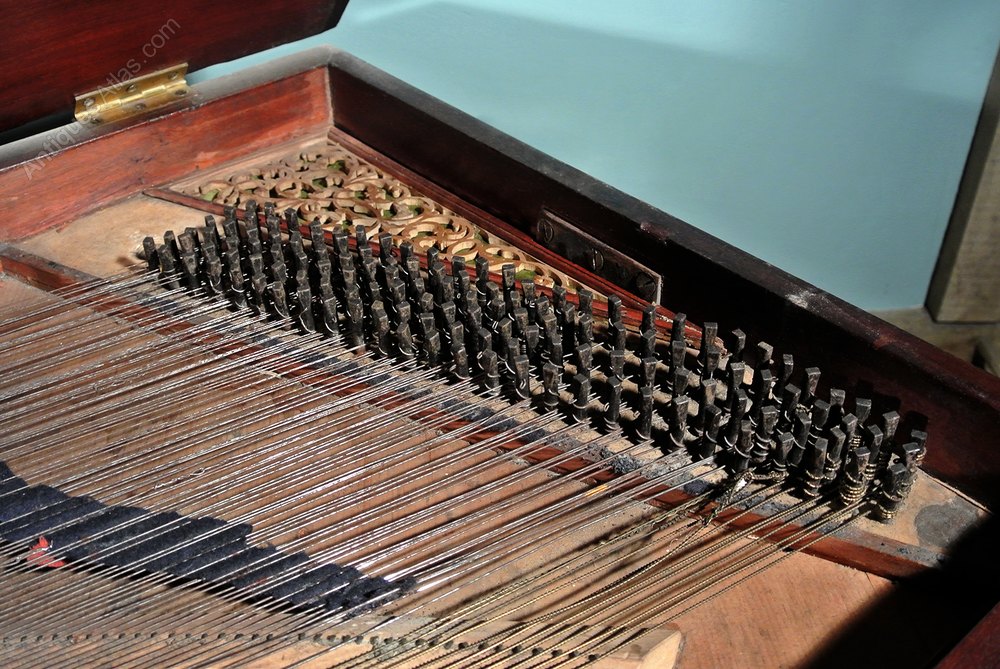How Eighteenth Century Piano Tuners Heard Major 3rds — 18th Century Aesthetics
Eben Goresko presents a Temperament Recital at the Philadelphia Museum of Art in 2000 where he demonstrates the usefulness and artfulness of tuning modern pianos in historic intonations to augment performances of Beethoven, Chopin, Brahms, Schubert, Bach, Mozart and other so called “equal temperament” composers.
In the 18th century, piano tuners, like musicians of the time, would have perceived major thirds within the context of the prevailing musical aesthetics and tuning systems of the period. During this era, tuning systems were based primarily on just intonation, a system that aimed to achieve pure and harmonious intervals by tuning pitches to simple frequency ratios derived from the harmonic series.
In just intonation, the major third is typically tuned to a frequency ratio of 5:4, meaning that the higher note in the interval vibrates at a frequency that is 5/4 times the frequency of the lower note. This ratio corresponds to a frequency difference of approximately 386 cents (cents being a unit of measurement for musical intervals).
However, achieving perfect consonance in all keys with just intonation is challenging due to the inherent limitations of the tuning system. As a result, compromises were made in tuning practices, leading to the development of various temperament systems that balanced the purity of intervals across different keys.
One of the most common temperaments used in the 18th century was meantone temperament, which aimed to optimize the tuning of perfect intervals like the major third while accepting some dissonance in other intervals. Meantone temperament typically involved narrowing certain intervals, such as the major third, to achieve greater consonance in certain keys while sacrificing purity in others.
In practice, piano tuners in the 18th century would have used tuning forks, monochords, or other tuning devices to tune intervals and temperaments by ear. Their perception of major thirds would have been influenced by their training, musical conventions, and aesthetic preferences of the time, which valued clarity, sweetness, and purity of sound.
Overall, 18th-century piano tuners would have heard major thirds within the context of the tuning systems and aesthetic ideals of the period, striving to achieve consonance and balance in their tuning while accommodating the limitations of the tuning system and the demands of the music they were tuning for.

Temperaments of the 18th Century
The 18th century saw the use of various temperaments, which are tuning systems that slightly adjust the pure intervals to evenly distribute the tuning discrepancies across the scale. This was necessary because a perfectly tuned octave (based on pure harmonic ratios) cannot be evenly divided into twelve perfectly tuned semitones or whole tones, making some intervals sound dissonant if played in keys far from the tonic.
- Mean-Tone Temperament: Earlier in the century, mean-tone temperament was common, which made fifths slightly narrow to make the major thirds closer to their pure (just) intonation. This made the thirds sound sweeter in keys close to C major but resulted in increasingly dissonant intervals in keys with more sharps or flats.
- Well-Temperament: As music evolved to use a wider range of keys, well-temperament became more popular. In well-tempered systems, the fifths are tuned in such a way that all keys are usable, though they each have a slightly different character. This allowed tuners to make major thirds sound consonant across more keys, though with slight variations in purity.
- Equal Temperament: By the end of the century, equal temperament, where all intervals except the octave are slightly compromised to make every key sound equally in tune (and equally out of tune), was gaining favor. This system made the major thirds universally narrower than pure, a characteristic sound that has become standard today.
Tuning Practices
Piano tuners of the 18th century relied heavily on their ears and developed a keen sense of the beats or wavering sound produced when two notes are slightly out of tune with each other. By listening to the beats in intervals, tuners could adjust the tension on the piano strings until the desired level of consonance or acceptable beat rate for the temperament being used was achieved.
Tools and Techniques
- Fork and Pipes: Tuners often used tuning forks or pipes set to specific pitches as their reference. From these references, they would tune an octave or a fifth and proceed to fill in the rest of the scale by tuning intervals to match the chosen temperament.
- Monochords: Some tuners also used monochords, single-stringed instruments with movable bridges, to measure and compare intervals precisely.
- Experience and Adaptation: Tuning was as much an art as a science, requiring experience and adaptation to the specific instrument, its acoustical properties, and the environmental conditions.
Conclusion
Eighteenth-century piano tuners had to balance the musical ideals of their time with the physical realities of keyboard instruments, leading to a variety of temperaments that made major thirds sound different depending on the system used. Their work was characterized by a deep understanding of acoustics, a skilled ear for the subtleties of intonation, and a practical approach to making a wide range of music playable and pleasant on the instruments of their time. This period laid the groundwork for the modern standard of equal temperament, reflecting an evolution in musical tastes and the increasing complexity of musical compositions.